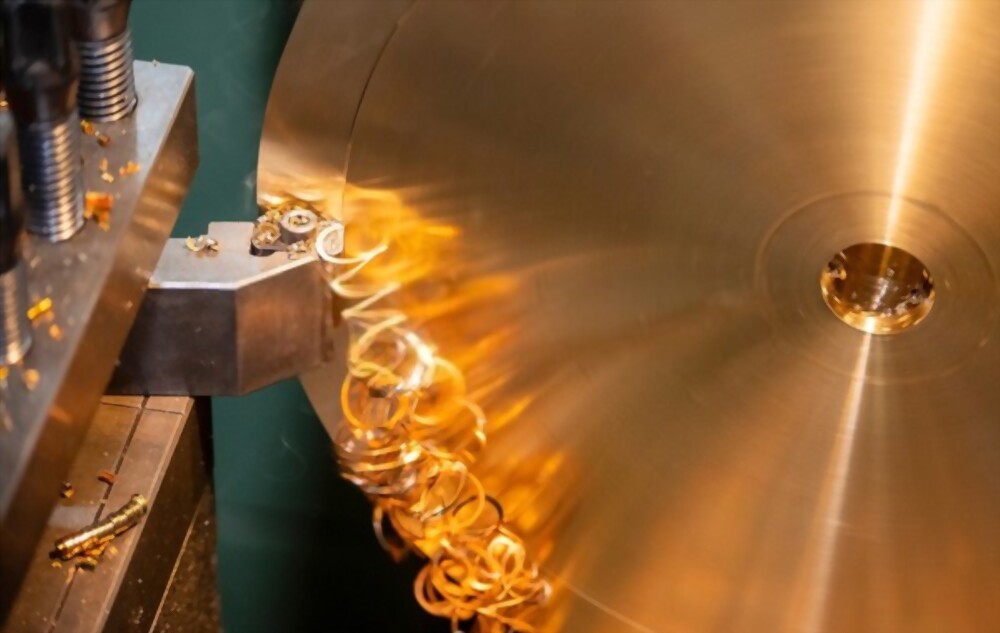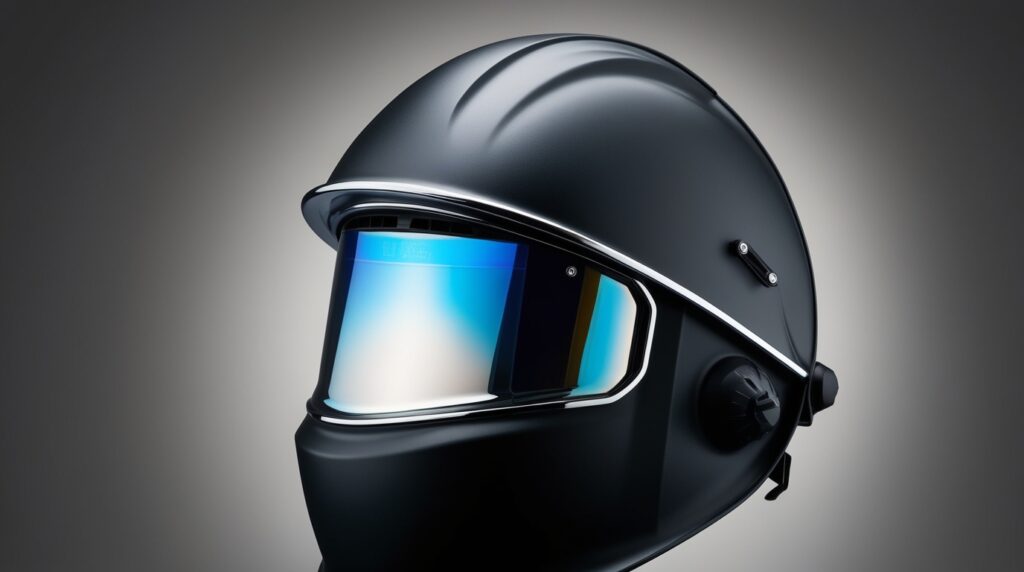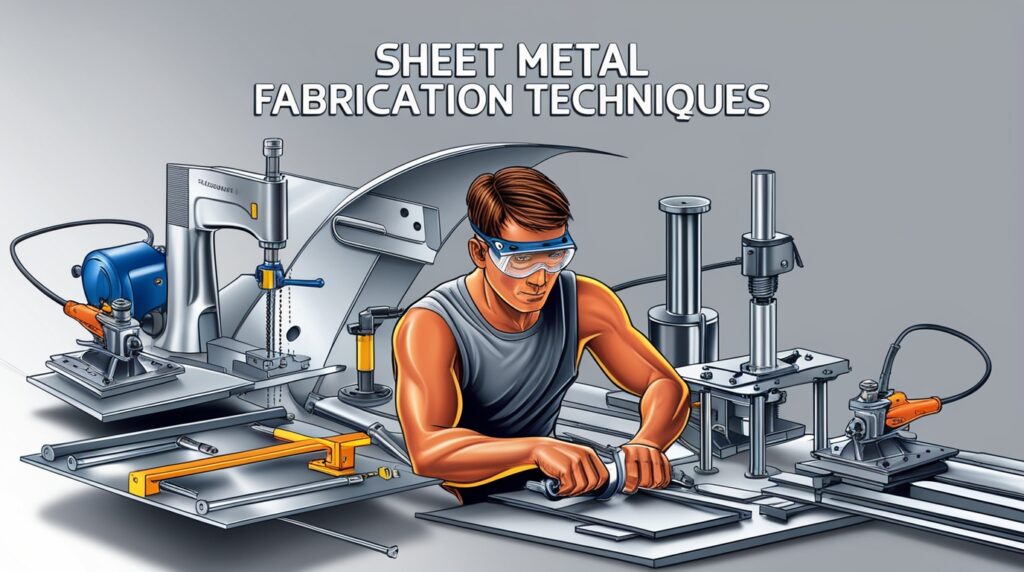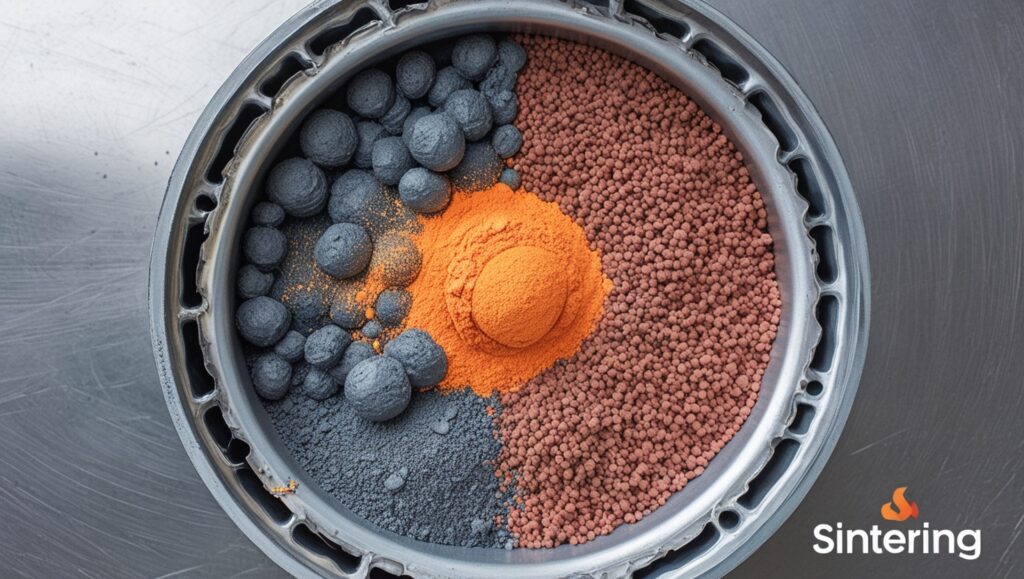Types of Chips
There are Four types of chips:
- Continuous Chip
- Discontinuous Chip
- Serrated Chips
- Continuous Chip with Built-up Edges

1. Continuous Chip
During the cutting of ductile materials, a continuous chip is produced due to the presence of tool cutting edge in compression and shear. These types of chips are in the form of long coils and have the same thickness throughout the length.
This type of chip is required, since it gives a good surface finish, improving the tool life and less power consumption. However, chip disposal is not easy and the surface finish of the finished work gets affected.
The following condition favors the formation of continuous chips.
- 1. Smaller depth of cut.
- 2. High cutting speed.
- 3. Large rake angle.
- 4. Proper cutting fluid.
- 5. Low friction between the tool face and the chips.
Continuous chips are long, ribbon-like structures that form during the machining of ductile materials under stable cutting conditions. These chips are characterized by:
- Uniform deformation
- Smooth surface finish on the machined part
- Potential issues with chip disposal and entanglement
Materials prone to forming continuous chips include:
- Low carbon steels
- Aluminum alloys
- Copper alloys
While continuous chips can indicate stable cutting conditions, they may pose challenges in chip management and evacuation from the cutting zone.
2. Discontinuous Chip or Segmental Chip
Discontinuous chips as shown in the figure are produced while machining brittle materials such as grey cast iron, bronze, and high carbon steel at low cutting speed without fluids when friction exists between the tool and chip.
During machining, the brittle materials lack the density which is necessary for plastic chip formation. But, it should be less. This will result in the formation of the discontinuous chip. In continuous chip formation, the shearing occurs at the head of the cutting tool continuously without fracture whereas in discontinuous chip formation, intermittently rupture occurs which will produce a segment of chips.
Handling of these chips is easier and they can be easily disposed of off since they are having a small length. Also, it will not spoil the finished workpiece surface as they do not interfere.
The following condition favors the formation of discontinuous chips.
- 1. Machining of brittle materials.
- 2. Small rake angle.
- 3. Higher depth of cut.
- 4. Low cutting speed.
- 5. Excess cutting fluid.
- 6. Cutting ductile material at very low feeds with a small rake angle of the tool.
Discontinuous chips are small, segmented pieces that form during the machining of brittle materials or under certain cutting conditions. These chips are characterized by:
- Irregular shapes and sizes
- Easier chip evacuation
- Potential for poor surface finish on the machined part
Materials that typically produce discontinuous chips include:
- Cast iron
- Hardened steels
- Some non-ferrous alloys
Discontinuous chips can be advantageous in terms of chip control but may lead to increased tool wear and surface roughness.
3. Serrated Chips
Serrated chips, also known as segmented chips, are partially continuous chips with a saw-tooth appearance. They form due to periodic variations in the cutting force and are common when machining:
- High-strength alloys (e.g., titanium alloys)
- Nickel-based superalloys
- Hardened steels
Serrated chips are characterized by:
- Alternating regions of high and low shear strain
- Improved chip breakability compared to continuous chips
- Potential for reduced cutting forces and tool wear
4. Continuous Chip With Built-Up Edge
During the cutting process, the interface temperature and pressure are quite high and between the tool-chip interface, the friction is also high. It causes the chip material to weld itself to the tool face near the nose as shown in the figure. These are called “built-up edges”.
The formation of built-up edges in the continuous chips is a transient and not steady phenomenon. The collected built-up chip material will then break away, part adhering to the undesired of the chip and part to the workpiece. Thus, the process will result in a poor surface finish on the machined surface and accelerated wear on the tool face.
However, this type of chip has some advantages, one important favor of it is that from the wears the rake face of the tool is protected due to moving chip and the action of heat. It may result in an increase in tool life.
The following condition favors the formation of the continuous chips with built-up edges.
- 1. Low cutting speed.
- 2. Small rake angle.
- 3. Coarse feed.
- 4. Large uncut thickness.
- 5. Insufficient cutting fluid.
Built-up edge chips occur when workpiece material adheres to the cutting tool edge, altering the effective tool geometry. This phenomenon is more common when machining:
- Soft, ductile materials
- At low cutting speeds
- With inadequate cutting fluid application
BUE chips can lead to:
- Poor surface finish
- Dimensional inaccuracies
- Increased tool wear
Introduction to Machining Chips
Machining chips, also known as swarf, are the small pieces of material removed from a workpiece during machining operations such as turning, milling, drilling, and grinding. These chips are not merely waste products but can provide valuable insights into the cutting process, tool performance, and overall machining efficiency.
Chip Formation
Chip formation is the result of material being removed from a workpiece. Chips are small pieces of material that have been cut off the surface of a larger piece. There are two types of chips: primary and secondary. Primary chips are created when the cutting tool first contacts the workpiece. Secondary chips are created after the initial contact between the cutting tool and the workpiece. The type of chip formed depends on the type of material being cut and the speed at which the tool is moving relative to the workpiece.

Causes of Chip Formation
The causes of chip formation are many and varied. A few of these causes include:
- Tool wear
- Workpiece hardness
- Cutting speed
- Feed rate
- Feed direction
- Angle of attack
- Surface finish
- Tool geometry
The impact of chip type in machining
There are three basic types of chips: rough, smooth, and burr. Rough chips are created when the tool is not sharp enough to remove the entire amount of material from the workpiece. These chips are often referred to as “oversized” chips. Smooth chips are created when the material being cut is soft enough to allow the cutting tool to completely penetrate the workpiece. Burrs are created when the cutting edge of the tool becomes dull. When the cutting edge is dull, the tool does not fully penetrate the workpiece, causing the material to stick to the side of the tool.
The Chip Formation Process
Mechanics of Chip Formation
The chip formation process begins when the cutting edge of a tool engages with the workpiece material. As the tool advances, it applies force to the material, causing it to deform plastically and eventually separate from the workpiece. This process involves complex interactions between the tool, workpiece, and cutting parameters.
Factors Influencing Chip Formation
Several factors affect the chip formation process:
- Workpiece material properties (ductility, hardness, thermal conductivity)
- Tool geometry (rake angle, clearance angle, nose radius)
- Cutting parameters (speed, feed, depth of cut)
- Cutting fluid application
- Machine tool rigidity and stability
Understanding these factors is essential for controlling chip formation and optimizing machining processes.
Conclusion
Understanding the types of machining chips and their formation mechanisms is essential for optimizing manufacturing processes. By implementing effective chip control strategies and leveraging advanced technologies, manufacturers can improve productivity, product quality, and overall operational efficiency.
As the field of machining continues to evolve, staying informed about the latest developments in chip control and management will be crucial for maintaining a competitive edge in the manufacturing industr



